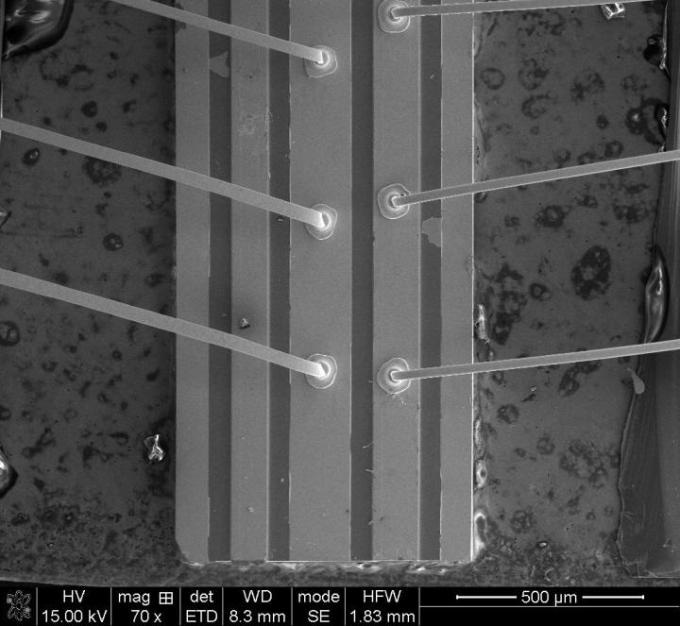Jul 27 2016
Researchers have been able to nearly double up the continuous output power of a specific laser, known as a terahertz quantum cascade laser, which has potential applications in airport security, medical imaging and more.
 This is a scanning electron microscope image of the terahertz quantum cascade laser.(Photo Credit: Wang, et al/AIP Advances)
This is a scanning electron microscope image of the terahertz quantum cascade laser.(Photo Credit: Wang, et al/AIP Advances)
Amplifying the continuous output power of these lasers increases the range of practical applications. The journal AIP Advances from AIP publishing reports the researchers results.
Terahertz radiation can be positioned between infrared light and microwaves on the electromagnetic spectrum. Although the energy is low it can penetrate through materials including ceramics, wood, plastic and clothing. Terahertz's unique radiation qualities make it appropriate to be used for imaging. However, the ability to control and engineer terahertz waves have slowed down technologies for radio, visible light, and microwave.
A team of scientists have made quick progress on a technology that produces terahertz light known as quantum cascade laser (QCL) made up of thin layers of material. These thin layers provide the laser with the required valuable property of tunability, allowing the laser to be designed to emit at a chosen wavelength. Terahertz QCL's output power is high compared to other terahertz sources, said Xuemin Wang, a researcher in the China Academy of Engineering Physics and first author on the new paper.
The work undertaken by Wang and his colleagues focuses on increasing the output power of terahertz quantum cascade lasers to a higher level, especially a mode where the laser output power is continuous.
In engineering, biomechanics and medical science, the applications require continuous wave mode.
Xuemin Wang, Researcher, China Academy of Engineering Physics
By increasing the material growth and production process for terahertz QCLs, Wang and his team developed a laser that produced a record output power of up to 230 milliwatts in continuous wave mode, the output that was previously recorded was 138 milliwatts.
Wang pointed out that the new 230 milliwatt laser had the potential to be used in air, unlike lower-powered lasers that has to face a challenge as particles in the air can absorb or scatter the laser light before it reaches its target.
Wang further stated that the increase is a proof that the team's precise method of engineering the growth of the laser's layers can optimize output power. He is also hoping that future advancements could allow the continuous power to increase above 1 watt. The 1 watt level has already been achieved by the terahertz QCLs in pulsed wave mode.
Wang believes that engineers and scientists will be able to use this new laser as a flexible source of terahertz radiation for remote sensing, medical imaging, spectroscopy and other applications.